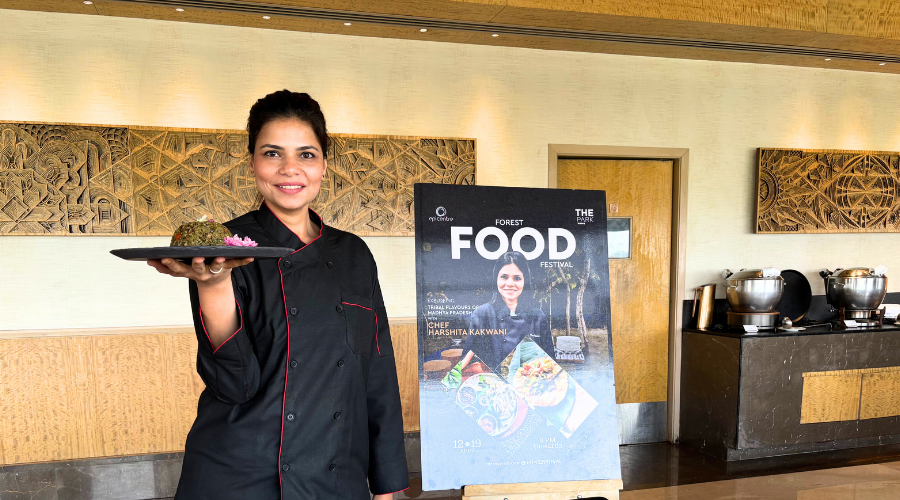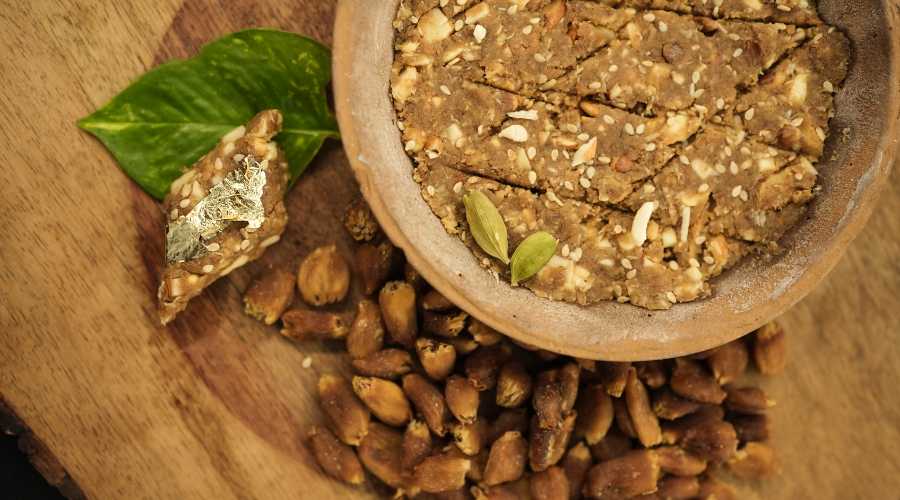The forest is nature’s treasure box, and tribals are its keepers. Chef Harshita Kakwani feels fortunate to build a life close to nature and learn from the tribal community. Born and raised in Indore, Kakwani was associated with the food and beverage industry from the start, but as a marketing professional. In 2015, she moved to the forest with her eight-month-old son, which changed her life. “I saw a group of girls picking mahua flowers under a tree, and it struck me how little I knew about the world. That moment sparked a journey of exploration that I’m still on,” said Kakwani in an exclusive chat with Outlook Traveller Eats.
As a city dweller, Kakwani was curious to explore the indigenous food and ingredients in the forest and wanted to showcase the tribal cuisine. “The forest and its people opened up new avenues for me in terms of living without medicines, exploring seasonal ingredients and cooking with the forest clan, unravelling the health benefits of every ingredient within nature,” said Kakwani.

Tribal Cooking: Philosophy, Ingredients and Techniques
Apart from forest superfoods and the nutritional value, tribal cuisine is a gift from nature that needs to be preserved. “The tribal community looks down upon their existence and culinary traditions, and I wanted to do my part to make them proud of what they are,” added Kakwani.
Tribal cooking stems from a simple philosophy of sustenance. “Nature provides us so many things, making them edible and using them in our daily life not only adds to the nutrition but also the art of sustainable living,” said Kakwani.
Discussing her best time in the forest, she says, “I learnt so much about the tribal cuisine from the women and elderly of the village. From forest stories to cooking lessons, it was a wholesome experience.” The natural bounty of the forest is magnificent with flowers, fruits and vegetables. Among indigenous forest flowers, Mahua, Malta, and Palash flowers have innumerable benefits. “Amaltaas flowers bloomed in May and supported gut health, while palaash, known for their cooling properties, were commonly used to make summer sharbats,” shared Kakwani. She tells how the growth of every indigenous ingredient is linked to a specific season, like Chirota Bhaji, a weed that grows on the edge of the farm, which is claimed to be the first sign of the arrival of monsoons. A range of mushrooms and yams grows in the monsoons, and Kakwani shares her experience tasting and cooking them. The mushroom range includes Baans Bhamori, Dokra pihri, Laal pihri, Bastar boda, and Dashra bhamori, all exclusively grown in the forests. “The tribes guide you with the edible ingredients of the forests. I ate around eight different types of mushrooms in the forest, one of which was Baans Karil, the mushroom that grows under the bamboo tree,” Kakwani said.

From unique flowers and leaves like tendu patta, which are used to wrap cigarettes, to Charoli, the wild almond tree, the forest is full of exceptional food sources. Adding to the list of magic are the techniques of tribal cooking that take it a step forward. Kakwani shares how cooking yams is difficult, but how forest produce comes to your rescue. “Tying up the yam with guava leaves and boiling it helps reduce itchiness,” said Kakwani. She also shared a tribal technique called Bhojna, where yams are cooked overnight in a bonfire. Having a firsthand experience in the forest, Kakwani shares an interesting experience of boiling an egg without water. “You cover the egg using cow dung and leave it in an open fire; the moisture from the dung would boil down the egg, giving you another interesting technique to cook your food,” she said.
The idea of foraging comes with both pros and cons. “Reviving the fading knowledge of tribal cooking and making the communities proud of their traditions is a big positive,” said Kakwani. However, she cautions against the overconsumption of forest resources because they are trending. “We go crazy about a superfood and then just leave it, like, in the case of matcha, it is trending, but the overconsumption of forest resources will ultimately lead to depletion,” said Kakwani. As the founder of Prana Superfoods and Earth Song Café, Kakwani bridges the gap between forest produce and accessibility, while supporting small farmers.“The forest has taught me Ayurveda, the nutritional power of native ingredients and finding my rhythm with nature for a healthier life,” she said.

























